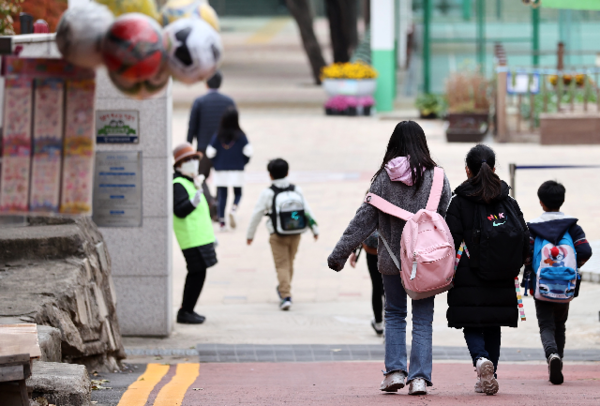Input 2021.01.29 15:16

In situations below the level of social distancing, kindergarten and elementary school students in the first and second grades can attend school every day. In the case of an elementary school with 150 students per grade and 900 students in total, up to 600 students per day (two-thirds of all students) in the second phase of distance, but from the new semester, up to 700 students including 300 students in first and second grades. It is now possible to leave school up to people.
The Ministry of Education said that even if the number of confirmed cases increases in the future, there will be no postponement of school opening. Education Minister Yoo Eun-hye said, “This year’s academic schedule starts normally in March without delaying the start of school,” he said. “We will observe the legal number of school days and conduct the college entrance exam on November 18.” Also, from the new semester, students who take remote classes can also eat meals at school if they wish.
However, among parents, there are voices of concern that the increase in the number of attending school will lead to a coronavirus outbreak in the school.
There is a lot of concern about the immediate meal service. At the online cafe where parents gather, “I’m an overcrowded school, so I don’t have to worry about the lunch time when I take off my mask. I wish I could leave school without eating meals.” I hope that it is optional.”
Teachers are also worried. Han Mo, 30, a teacher at an elementary school in Seodaemun-gu, Seoul, said, “It is basic to install partitions in the catering room and to seat students in zigzags. Last year, we kept a certain distance from class to class in case a confirmed case comes out.” “If you go to school, the space in the lunch room will be limited, so how to distribute meal time for each grade level will become important.”

Kim Mo (28), an elementary school teacher in Gangbuk-gu, Seoul, said, “I don’t know if the Ministry of Education’s plan to hire a fixed-term teacher is to give each class teacher by splitting it in half or to provide multiple homeroom teachers.” “It is meaningless to share itself, and I am worried about how to deal with complaints from parents when a fixed-term teacher becomes the homeroom teacher.”
Teacher organizations are also voicing criticism. The Korean Federation of Teachers’ Associations said on the 28th, “Toilet, corridor, food service room, breaks, etc. can become blind spots for quarantine.” The National Teachers’ Workers’ Union also argued that “in order to prepare educational conditions for safe attendance classes, it is necessary to limit the number of students per class to 20, rather than support for cooperative teachers or fixed-term teachers.”
Eun-mi Chun, a professor of respiratory medicine at Ewha Womans University Mokdong Hospital, said, “I am worried that students who are often asymptomatic will become another source of infection after school,” and said, “Guidelines to lower the density in all aspects such as classes, meals, and breaks to prevent direct contact between students. We have to prepare it urgently,” he said.
“We have to provide a diagnostic kit in the school’s health room, etc. to conduct rapid tests on students showing suspected coronavirus symptoms, and then quarantine them.” We will have to create a system that is there.”
